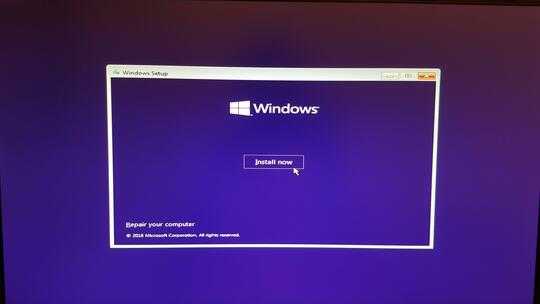1
I am attempting my first ever PC build. I have definitely learnt a lot and I am now up to installing an OS.
I purchased a Windows 10 USB (rookie mistake, I know) and when I begin the installation process, literally after BIOS, the screen appears to freeze. I can navigate through BIOS just fine but I cannot get past Windows Setup as shown here:
So the mouse will just not move and attempting to navigate using the keyboard does not work.
I have my HDMI connected to the GPU, the GPU is all lit up and the fans are working. I have turned off integrated graphics but also tried with them on and plugged into the mobo, the same issue occurs. I have tried changing the USB slots of my mouse and keyboard.
Specs:
- CPU - i7 9700k
- MOBO - Gigabyte Aorus z390 pro wifi
- GPU - 2080 MSI Gaming X Trio
- RAM - trident Z 2x8GB DDR4 3200MHz
- PSU - EVGA 850W 80+Gold
Any suggestions will be greatly appreciated!
My USB configuration settings are: Legacy USB support - Enabled, XHCI Hand-Off - Enabled EHCI Hand-Off - Enabled USB Mass Storage Driver Support - Enabled Port 60/64 Emulation - Enabled.

1What are you USB settings set to within the firmware? Be as specific as possible. The system is not frozen, this is a case, where your USB input devices are not being detected. – Ramhound – 2019-06-14T11:15:08.440
So my USB configuration under peripherals are set as: Legacy USB support - Enabled, XHCI Hand-Off - Disabled, EHCI Hand-Off - Disabled, USB Mass Storage Driver Support - Enabled, Port 60/64 Emulation - Disabled. Please do let me know if there's another piece of information you need. – RJackson – 2019-06-14T11:29:23.343
Which USB ports are you using? Try not to use your USB 3.0 ports. – Seth – 2019-06-14T11:29:25.280
@Seth - Windows supports being installed from a USB 3.0 device. The use of a USB 3.0 devices is not the problem here. Some devices don't even have USB 2.0 ports, so the author might not have a choice in the matter, granted most mice and keyboards are not even USB 2.0 devices. – Ramhound – 2019-06-14T11:31:21.303
@Ramhound he does. 4 USB 2.0/1.1 ports on the back 3 USB 3.1 Gen 1, 2 USB 3.1 Gen 2. I'm not sure how USB storage devices are presented but I've had situations where Windows was missing USB 3.0 drivers so devices connected to the USB 3.0 ports were unavailable. Shouldn't be as much of an issue with Windows 10. If the installation environment does support full USB 3.0 there shouldn't be any reason to enable all the fallback/legacy USB options in the BIOS. XHCI Hand-off might be different from what you expect (page 38 in the manual). – Seth – 2019-06-14T11:51:55.563
@Seth - "where Windows was missing USB 3.0 drivers" - Windows 7 by default does not have USB 3.0 drivers which means it cannot be installed from a USB 3.0 device. Windows 8+ does not have this problem. The reason I suggested both XHCI and EHCI be enabled is to cover the situation of a USB 2 and/or USB 3 device being used. Easier to suggest a solution I knew would work then suggest a partial solution. – Ramhound – 2019-06-14T15:43:54.800